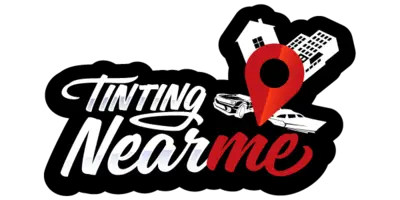2024 West Virginia Legal Tint Laws Explained
Is it true that you’re fully aware of the 2024 West Virginia legal tint laws? You might think you’ve got it down, but there’s a fair chance you could be missing some key details. These laws are far from simple, with specific stipulations on tint darkness, reflectivity standards, and separate rules altogether for SUVs and vans. Even the slightest misunderstanding could lead to a hefty fine, and nobody wants that. So, let’s navigate through this intricate maze of regulations together to ensure your ride is fully compliant and your wallet remains intact.
The information on myeyerx.net isn’t legal advice; consider it a starting point. Always verify with local and state authorities, as the final decision rests with you. We are not lawyers. For specific legal guidance, we can refer you to legal experts. Remember, knowledge of both state and local laws is essential, and even law enforcement might not be fully updated. We aim for accuracy but advise double-checking for the latest regulations.
Key Takeaways
Key Takeaways
Key Takeaways
- Window tint in West Virginia must meet specific Visible Light Transmission (VLT) percentages.
- Non-reflective tint is allowed on the top 5 inches of the windshield.
- Front side windows of trucks, vans, and SUVs must allow at least 35% light transmission.
- Metallic tint colors are allowed for all windows.
Need Help Getting a Medical Exemption?
Our Doctors Are Here For You!
MyEyeRx was established with the objective of simplifying the complex landscape of state regulations pertaining to legal tint medical exemptions for window tinting. For individuals seeking to navigate these regulations without resorting to a do-it-yourself approach, we offer a streamlined solution. Our team includes qualified medical professionals who are available to conduct consultations via Zoom. These sessions are designed to assess your eligibility for a medical exemption, ensuring a personalized and efficient process for acquiring the necessary documentation.
West Virginia Tint Darkness Limits
Ever wondered about the specific limits for tint darkness on your vehicle in West Virginia? You’re not alone. Understanding the Virginia window tinting laws can seem daunting, but they’re crucial to ensure you’re in compliance and to avoid penalties.
West Virginia tinting laws are exacting, with no room for variance. They insist that your vehicle’s tint must meet specific Visible Light Transmission (VLT) percentages. For instance, non-reflective tint is permissible on the top 5 inches of your windshield. This is a critical aspect of West Virginia Window Tinting laws to keep in mind while having your car windows tinted.
If you’re driving a truck, van, or SUV, the Virginia Window Tint Laws stipulate that your front side windows need to allow at least 35% of light transmission. This percentage ensures that enough light enters your vehicle, maintaining clear visibility for you as a driver.
As for tint colors, it’s essential to know that while metallic tint colors are allowed for all windows in West Virginia, yellow, amber, or red tints are not allowed on any car windows. Adding to this, the maximum reflectivity allowed is 20%.
The laws in West Virginia are meticulous about legal tinting to ensure safety on the roads. Therefore, you must adhere to the Virginia window tint law to avoid any legal repercussions. So, next time you consider getting a tint in West Virginia, remember these guidelines for window tint in West, ensuring your vehicle meets the WEST VIRGINIA TINT laws’ requirements.
Reflectivity Standards for Tint
Now that we’ve examined the general laws regarding window tinting in West Virginia, let’s tackle the specifics surrounding reflectivity standards for tint. Reflectivity in the context of auto window tint refers to how much light the tint reflects. It plays a crucial role in your visibility as a driver, hence its regulation under the law.
In West Virginia, the law outlines specific reflectivity standards for tint depending on the type of vehicle. Let’s outline these standards:
- For sedans and multi-purpose vehicles, the window tint should not exceed 35% reflectivity.
- Reflective tint on the front side windows must not exceed 20% reflectivity.
- For SUVs and vans, metallic tint colors are allowed with a maximum reflectivity of 20% on front and back side windows.
These reflectivity standards are in place to ensure that you can see clearly when driving, particularly in low light conditions. Non-reflective tint is allowed, meaning that you can use tint film that does not reflect light.
Remember to comply with these standards to stay on the legal side of things. Violating these tinting laws in West Virginia can result in penalties. Additionally, when purchasing or applying tint, make sure to check the reflectivity level.
Regulations for SUV and Van Tints
When it comes to tinting SUVs and vans in West Virginia, there are specific regulations you’ll need to adhere to. Understanding the Tint Laws in West Virginia is crucial for maintaining compliance and avoiding fines. Notably, the tinting laws in West Virginia differ based on the type of car window tint you’re considering.
Let’s delve into the specifics of these regulations in West Virginia. Your front side windows must allow 35% or more light transmission. This means your tint darkness must not exceed this percentage to ensure adequate visibility. For other window areas such as the side windows and window behind, the State tint laws allow any darkness. This provides leeway for those desiring more privacy or heat reduction in their vehicles.
Here’s a quick rundown of West Virginia Window Tint laws for SUVs and vans:
Window Area | Tint Darkness | Other Regulations |
Front Side Windows | 35% or more light transmission | – |
Side Windows | Any darkness | – |
Window Behind | Any darkness | – |
Tint Colors | Metallic allowed up to 20% reflectivity | Yellow, amber, red not permitted |
General | – | Enhances privacy, reduces heat |
Medical Exemptions in Tint Laws
Did you know there are medical exemptions to West Virginia’s tint laws? Yes, it’s true! The current West Virginia window tint laws allow medical exemptions for special cases. This means that if you or someone in your vehicle has a health condition that requires darker window tinting, you may be exempt from some of the state’s tint laws.
Here are a few key points to remember about medical exemptions:
- To qualify, a licensed physician must certify the film on your windows as necessary for your health.
- You must carry documentation of the tint exemption in West Virginia in your vehicle at all times.
- Check with your local DMV or law enforcement agency to understand the specific terms of the exemption.
However, it’s not all straightforward. To identify legal tinting under medical exemptions, you should consult your state’s specific requirements. Just because West Virginia tint laws allow medical exemptions, it doesn’t mean all tints are acceptable. You could still be in violation if your tint is too dark or if it’s on a window that doesn’t typically allow tinting.
To ensure you’re in compliance, it’s best to consult your state’s DMV or a local law enforcement agency. They can provide you with the most accurate and up-to-date information about the current West Virginia window tint laws and the medical exemptions that apply.
If you would like to bypass having to fill out paperwork and dealing with the state, we can help you get an online medical exemption for window tint in West Virginia.
Understanding Tinting Costs
While ensuring compliance with West Virginia’s tint laws and potential medical exemptions, it’s equally crucial to understand the costs associated with window tinting. The expenses involved in getting your car windows tinted can vary significantly based on several factors.
The type of tint you choose for your tinted car is a primary cost determinant. Basic tinting for a sedan using classic film often costs less than $150, whereas high-quality film types like ceramic tint may run up to $400. If legal tinting is required, these costs are something you’ll need to consider.
Another factor influencing the costs is the number of windows you want to tint. Naturally, the more windows you tint, the higher the cost will be. Additionally, the warranty options you select can also affect the price.
If you’re looking for a more economical route, DIY tint kits are an option. These kits typically cost less than $100, and if you’re handy, they can provide significant cost savings. However, you must ensure that any self-applied tint complies with West Virginia tint laws, specifically the rules regarding the AS-1 line and the specific terms allowed by state law.
When understanding tinting costs, it’s essential to factor in the benefits of window tinting too. These include UV protection and privacy, which can offer long-term savings.

Don't want the hassle? Let us take care of your exemption for you!
MyEyeRx.net is here to help you streamlines the process of obtaining a medical exemption for window tint online. Explore our services to easily transform your window tint from non-compliant to legally approved!
Because of the differences in each of the 50 states, we’ve crafted distinct guides for securing window tint medical exemptions for each of the individual states.

Toriano (Tory) Dewberry
Become one of the many satisfied clients Toriano has assisted in obtaining a medical exemption without stepping out of their homes. Click the button below to begin and discover if you're eligible for a medical exemption.

Toriano (Tory) Dewberry
Become one of the many satisfied clients Toriano has assisted in obtaining a medical exemption without stepping out of their homes. Click the button below to begin and discover if you're eligible for a medical exemption.
Frequently Asked Questions (FAQ'S)
What Is the Darkest Legal Tint in West Virginia?
In West Virginia, you’re allowed a non-reflective tint on the top 5 inches of your windshield. Your side and rear windows must permit over 35% light in. The tint’s durability, UV protection, and aesthetics depend on installation quality and maintenance. It’s crucial to consider these safety concerns and costs. Remember, tint laws vary by state, so always check local regulations. West Virginia’s legal tint ensures maximum visibility while providing some degree of privacy.
How Do You Get a Tint Exemption in Wv?
In West Virginia, you can get a tint exemption by providing a medical necessity certification from your optometrist or physician. Your vehicle must have side mirrors if you’ve tinted windows behind the driver’s seat. Also, your tint can’t be more than 20% reflective and can’t be in prohibited colors like red, yellow, or amber. Lastly, the film manufacturer must certify the tint and attach a compliance label.
How Much Is a Tint Ticket in Wv?
In West Virginia, the cost of a tint ticket varies but it’s typically around $200. However, it’s not just about ticket costs. Legal implications can include traffic violations on your record. Avoid penalties by understanding state regulations and considering tint removal. Remember, ticket frequency depends on officer discretion. Know your legal rights and be prepared for potential court appearances. It’s all part of navigating the law in WV.
Can You Get Away With 35 Tint in Virginia?
Yes, you can have 35% tint in Virginia. It enhances car appearance, offers UV protection, and addresses privacy concerns. However, be aware of tint restrictions. Metallic tints with over 20% reflectivity aren’t allowed. Tinting risks include potential fines if laws aren’t followed. Proper tint installation and potential tint removal should be considered. Remember, cars with tinted rear windows need twin side mirrors. Complying with these rules avoids issues with tint enforcement.

MyeyeRx.net
Ensuring your tint is not just about style, but legality and safety.
Let us guide you through the maze of state regulations to legal clarity.

Conclusion
In a nutshell, don’t let your ride’s tint slide into illegal territory. Remember, your windshield tint should be non-reflective and only grace the top 5 inches. Side and rear windows must let in over 35% light with a max reflectivity of 20%. If you’re cruising in a truck, van, or SUV, rules change slightly. Keep it on the sunny side of the law, or you could be forking over up to $200 in fines. Stay informed and keep it cool, West Virginia.
Looking to find a Reputable Window Tint Company In West Virginia?
Checkout Tintingnearme.com to Find A Local Tint Shop
After learning about window tint laws, the next step is to find a trusted local window tinting shop. Tinting Near Me offers a selection of reputable shops knowledgeable in both quality tinting and legal standards, including medical exemptions.
Choose a shop from their list for expert service that meets legal requirements and enhances your vehicle’s compliance and protection.


